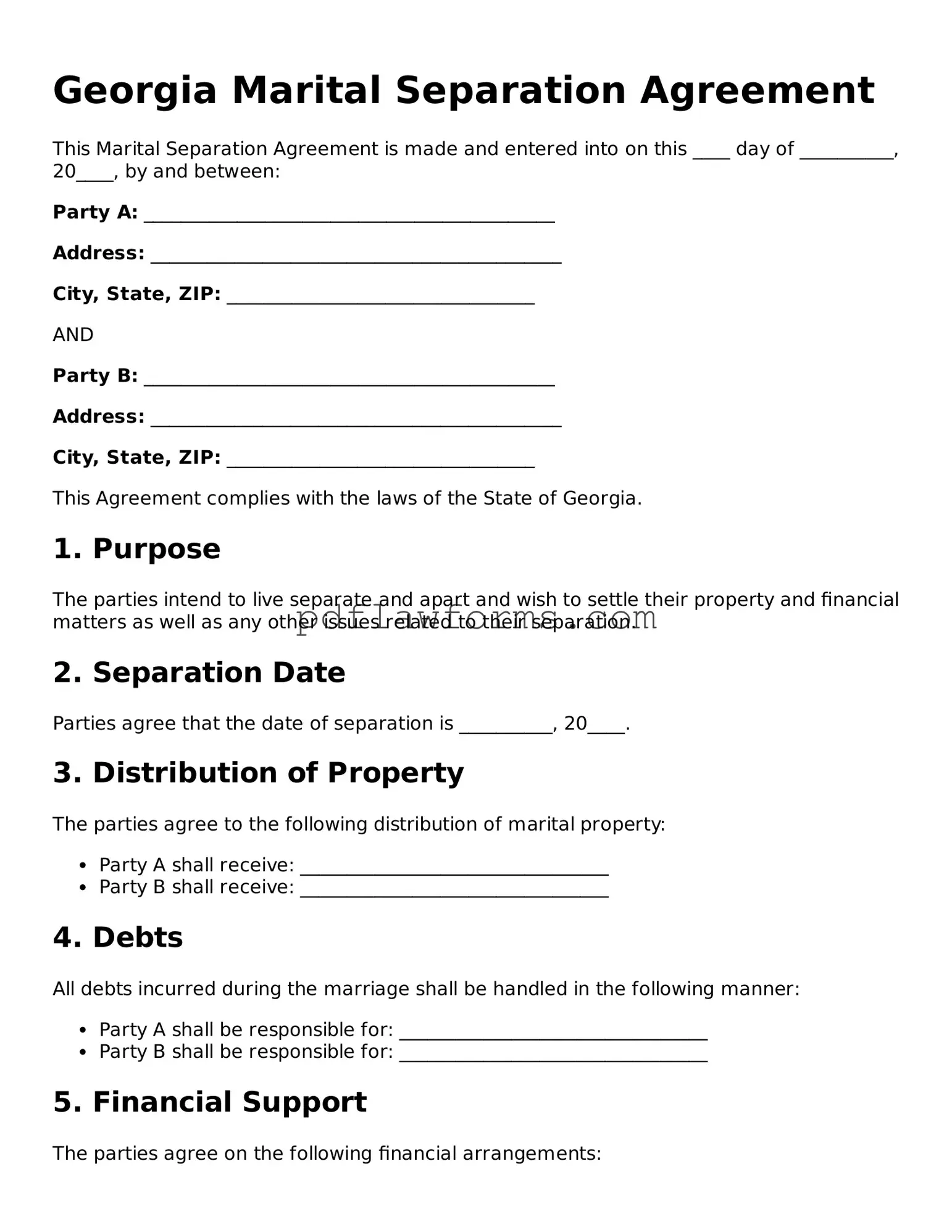Filling out the Georgia Marital Separation Agreement form can be a daunting task. Many people make common mistakes that can lead to confusion or even legal issues down the road. Understanding these pitfalls can help ensure that the agreement is completed correctly.
One frequent mistake is not including all necessary information. It's essential to provide complete details about both spouses, including full names, addresses, and dates of birth. Omitting any of this information can create complications later on.
Another common error is failing to clearly outline the terms of the separation. This includes property division, child custody arrangements, and financial responsibilities. Vague language can lead to misunderstandings and disputes in the future. Clarity is key.
Some individuals neglect to address debt responsibilities. It's crucial to specify how debts will be managed during the separation. If this is not clearly stated, one spouse may end up responsible for debts that the other should also share.
People often forget to date the agreement. A date is vital as it establishes when the separation officially begins. Without a date, it can be challenging to determine the timeline of events, which may affect legal proceedings later.
Another mistake is not having the agreement notarized. While it might seem like an unnecessary step, having a notary public witness the signatures can add an extra layer of validity to the document. This can be especially important if the agreement is ever challenged in court.
Lastly, some individuals overlook the importance of reviewing the agreement with legal counsel. Even if both parties agree on the terms, having a lawyer review the document can help identify potential issues and ensure that both parties’ rights are protected. This step can save time and stress in the long run.
